
Relic of a pitifully uneven battle; surviving column; Mount Vesuvius looms in background; Pompeii, Italy. October 2009.
Pompeii was destroyed by volcanic eruptions from Mount Vesuvius in 79 A.D. For at least parts of two days, debris of various kinds, including dirt, ash, cinder, rock and what could only have been boiling lava, totally covered the city and some of its inhabitants. All of this provided an archaeological snapshot for those who rediscovered and began to explore the site roughly 1500 years later. By about 1750, excavation began in earnest. Not all of the extensive damage that eventually snuffed out Pompeii and hid it from view for so long is attributable to volcanic action. Early in 62 A.D., a highly destructive earthquake rocked Pompeii and the surrounding area, damaging or destroying all manner of structures. Scholars say that some rebuilding took place during the years leading up to the volcanic eruptions of Mount Vesuvius. Today, at the beginning of the 21st century, there is considerable and wide-ranging deterioration in Pompeii as, among other things, walls crumble and remaining frescoes continue to lose their detail. All this despite a variety of preservation efforts.
-
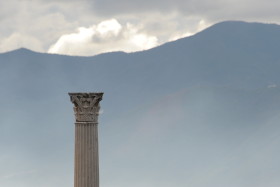
-
Relic of a pitifully uneven battle; surviving column; Mount Vesuvius looms in background; Pompeii, Italy. October 2009.
-
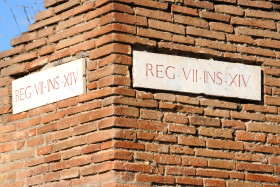
-
Cross streets; Pompeii, Italy. October 2009.
-
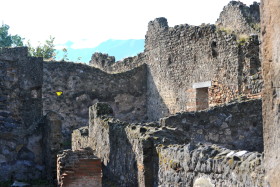
-
Where ruins remain; Pompeii, Italy. October 2009.
-
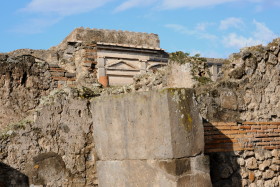
-
Architectural detail among the ruins; Pompeii, Italy. October 2009.
-
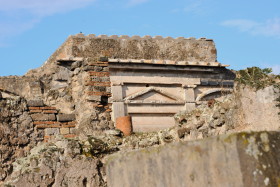
-
In detail; Pompeii, Italy. October 2009.
-
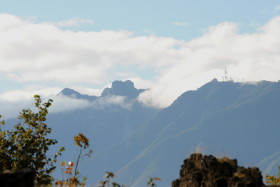
-
Rim of Mount Vesuvius among the clouds; as seen from Pompeii, Italy. October 2009.
-
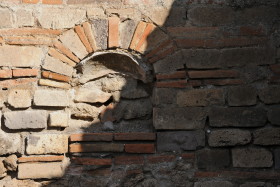
-
In sunlight, shadow; interior detail; Pompeii, Italy. October 2009.
-
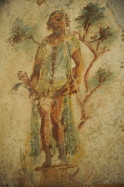
-
Interior wall art; fresco; Pompeii, Italy. October 2009.
-

-
A hint of color among shadows; Pompeii, Italy. October 2009.
-

-
Ornate interior detail; Pompeii, Italy. October 2009.
-
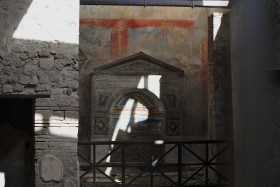
-
Overview; building interior detail; Pompeii, Italy. October 2009.
-
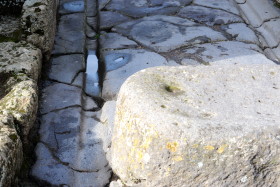
-
Wheel rut; street, curb detail; Pompeii, Italy. October 2009.
-
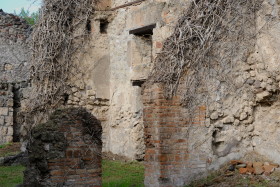
-
Assault of the vines; Pompeii, Italy. October 2009.
-
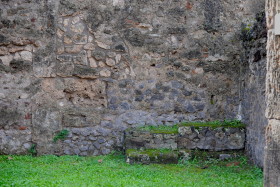
-
Rock patterns; gray on green; Pompeii, Italy. October 2009.
-
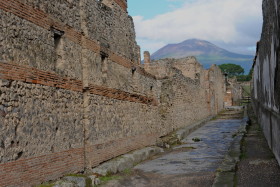
-
An ancient street where Mount Vesuvius still looms; Pompeii, Italy. October 2009.
-
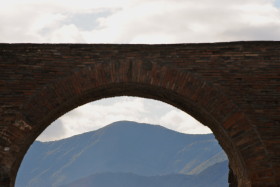
-
All in a frame; arch, mountains, sky; Pompeii, Italy. October 2009.
-

-
Mixed textures; Pompeii, Italy. October 2009.
-
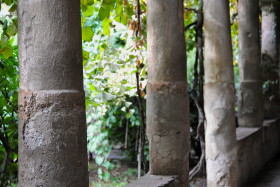
-
Surviving pillar in context; Pompeii, Italy. October 2009.
-
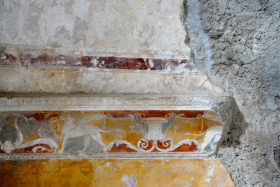
-
Wall detail; Pompeii, Italy. October 2009.
-
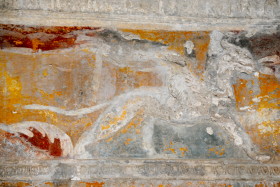
-
Hints of what was; Pompeii, Italy. October 2009.
-
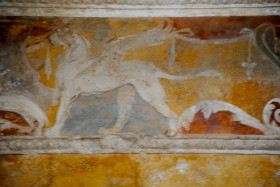
-
Winged creature; Pompeii, Italy. October 2009.
-
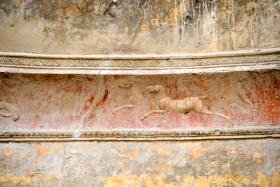
-
As if in flight; Pompeii, Italy. October 2009.
-
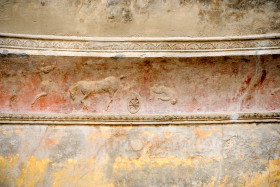
-
An unfolding, incomplete tableau; Pompeii, Italy. October 2009.
-
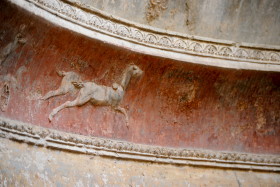
-
Flying horses; Pompeii, Italy. October 2009.
-
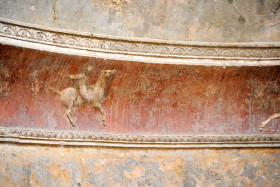
-
Horse, rider; Pompeii, Italy. October 2009.
-
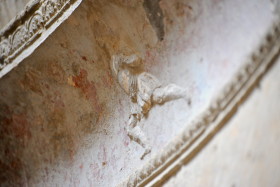
-
Headless; Pompeii, Italy. October 2009.
-
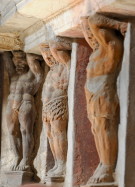
-
Enduring strength; Pompeii, Italy. October 2009.
-
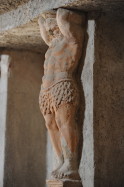
-
Bearing the weight; Pompeii, Italy. October 2009.
-
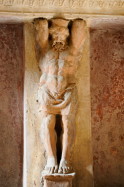
-
Bearded, resolute; Pompeii, Italy. October 2009.
-
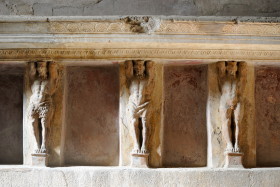
-
On pedestals; Pompeii, Italy. October 2009.
-
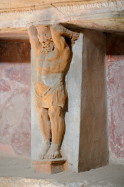
-
Holding on; Pompeii, Italy. October 2009.
-
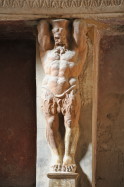
-
Raw power; Pompeii, Italy. October 2009.
-
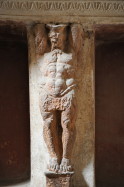
-
Crumbling; Pompeii, Italy. October 2009.
-
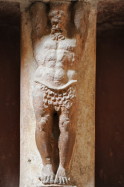
-
In sunlight, shadow; Pompeii, Italy. October 2009.
-

-
Skyward; Pompeii, Italy. October 2009.
-
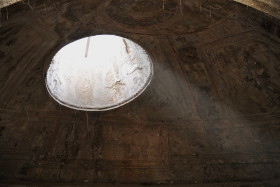
-
A shaft of light; Pompeii, Italy. October 2009.
-
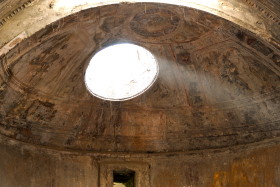
-
What remains; Pompeii, Italy. October 2009.
-
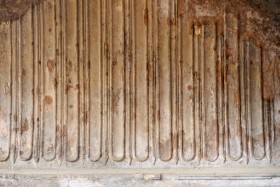
-
Architectural detail; Pompeii, Italy. October 2009.
-
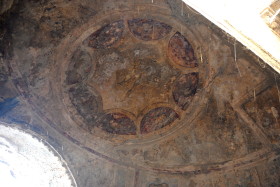
-
Overhead; Pompeii, Italy. October 2009.
-
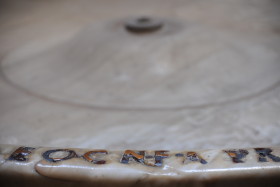
-
Fountain detail; Pompeii, Italy. October 2009.
-
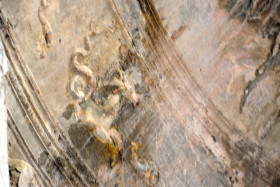
-
Like many others, a vanishing fresco; Pompeii, Italy. October 2009.
-
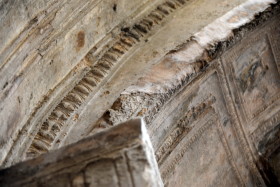
-
Interior arch detail, frescoes; Pompeii, Italy. October 2009.
-
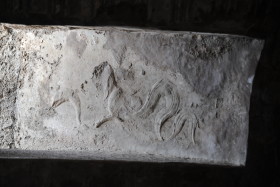
-
In imperfect relief; Pompeii, Italy. October 2009.
-

-
A hint of what was; Mount Vesuvius in the distance; Pompeii, Italy. October 2009.
-
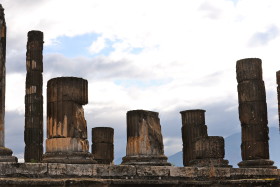
-
Still skyward; Pompeii, Italy. October 2009.
-
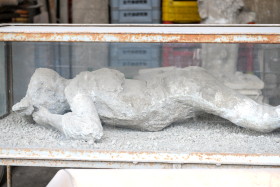
-
Plaster cast of area in which the body of a Mount Vesuvius eruption victim was encased before it was consumed by the attending intense heat; Pompeii, Italy. October 2009.
-
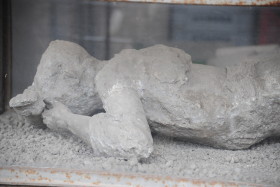
-
Detail; plaster cast of eruption victim’s body print in the surrounding volcanic material; Pompeii, Italy. October 2009.
-

-
Detail, plaster cast of eruption victim’s body print in the surrounding volcanic material; Pompeii, Italy. October 2009.
-
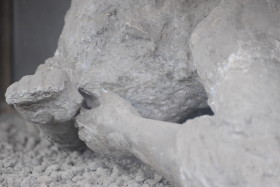
-
Even closer; plaster cast of eruption victim’s upper body print in the surrounding volcanic material; Pompeii, Italy. October 2009.
-
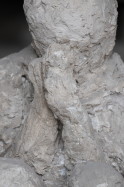
-
Prayer; plaster cast of eruption victim’s body print in the surrounding volcanic material; Pompeii, Italy. October 2009.
-
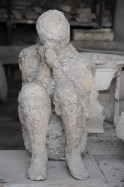
-
As the volcanic debris fell, lava flowed; as a life was taken; Pompeii, Italy. October 2009.
-
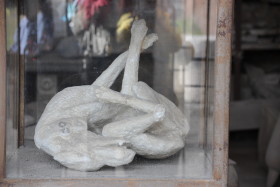
-
Plaster cast of area in which a dog’s body was encased following the eruption of Mount Vesuvius; Pompeii, Italy. October 2009.
-
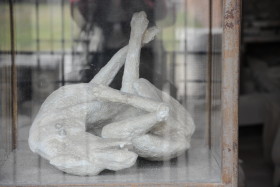
-
Plaster cast two; dog; Pompeii, Italy. October 2009.
-
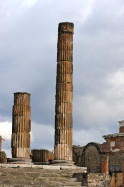
-
Sectional columns; Pompeii, Italy. October 2009.
-
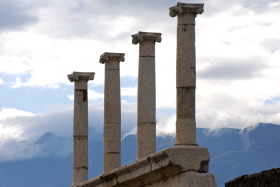
-
Still standing against Mount Vesuvius in background; Pompeii, Italy. October 2009.
-
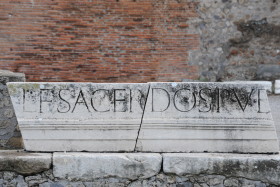
-
Among the ruins; Pompeii, Italy. October 2009.
-
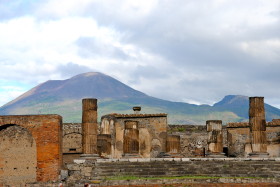
-
Mount Vesuvius as viewed from the ruins of Pompeii, Italy. October 2009.
-
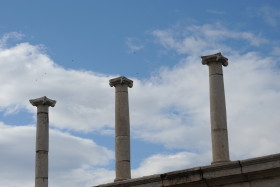
-
Three sentinels; Pompeii, Italy. October 2009.
-
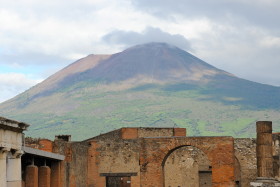
-
Looming, brooding, deadly Mount Vesuvius; Pompeii, Italy. October 2009.
-
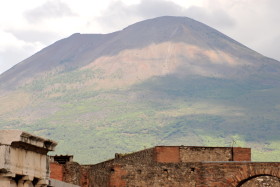
-
At the foot of Mount Vesuvius; Pompeii, Italy. October 2009.
-
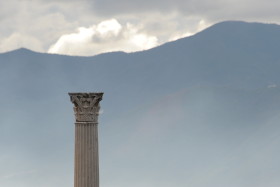
-
Relic of a pitifully uneven battle; surviving column; Mount Vesuvius looms in background; Pompeii, Italy. October 2009.
-
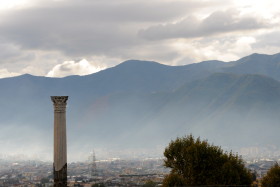
-
At a volcano’s feet; Mount Vesuvius; from Pompeii, Italy. October 2009.
-
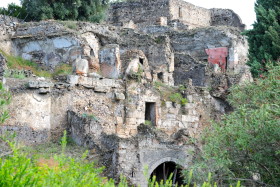
-
Tiered ruins; Pompeii, Italy. October 2009.
-
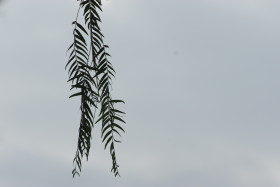
-
A tangled silhouette; Pompeii, Italy. October 2009.
-

-
Fragility; Pompeii, Italy. October 2009.
-

-
Black on blue; Pompeii, Italy. October 2009.
-
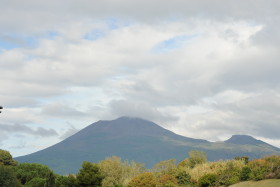
-
At rest; Mount Vesuvius; as seen from Pompeii, Italy. October 2009.
-

-
Where life continues, endures; Pompeii, Italy. October 2009.
This entry was posted in Animals, Architecture, Art, Clouds, Craftsmanship, Galleries, Home Exteriors, Landscapes, Public / Governmental, Public Art, Trees, Views and tagged Italy, Pompeii. Bookmark the
permalink. Both comments and trackbacks are currently closed.
A Walk in Pompeii, Italy
Relic of a pitifully uneven battle; surviving column; Mount Vesuvius looms in background; Pompeii, Italy. October 2009.